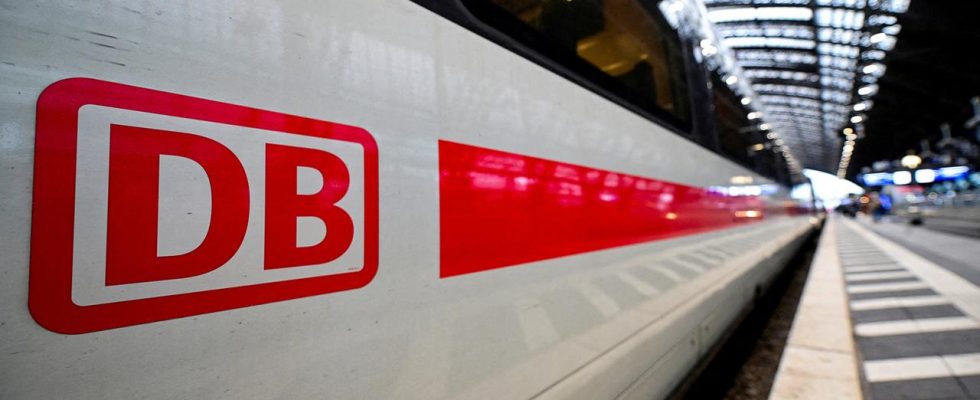Delays, lots of strikes and then a big loss: Deutsche Bahn has made billions of euros in losses. How can that be?
A short clip is intended to show what the railway will be about in the next few years: “Bahnsinn Riedbahn” is the name of the video that CEO Richard Lutz presented at the annual press conference in Berlin. The Riedbahn route between Frankfurt am Main and Mannheim is both a pilot project and a dress rehearsal for Deutsche Bahn. The film shows the various people and trades behind the upcoming effort, which will begin the general renovation of the rail network in the summer by 2030.
But even with this pilot project, Deutsche Bahn is delayed. The group carried out preparatory work on the Riedbahn route in January and the restart was delayed by a week: due to two GDL strikes and an unusually severe onset of winter, according to the company.
Comprehensive Investment program
Major construction sites and delays – the two ongoing issues at Deutsche Bahn. And now also a loss of 2.4 billion euros for the past year. For comparison: in 2022 it was “only” 227 million euros. The group explained it this way, among other things: They invested a lot, namely 7.6 billion euros, and paid in advance for the federal government. “We have built more than ever before, because the renovation and modernization of the infrastructure cannot be postponed,” said CEO Lutz.
2023 marks a turning point for railways in Germany, Lutz continued. In collaboration with the federal government, the railway and construction industries, the most comprehensive investment program for rails and stations since the railway reform of 1994 was launched.
The rail network, which has been underfinanced and dilapidated for decades, is the main reason for poor punctuality figures: 64 percent of long-distance trains were without delays in 2023, and in 2022 it was 65.2 percent. The rate in freight transport also fell – from 91.8 percent of trains on time in 2022 to 91.0.
The big construction sites are yet to come
The necessary general renovations are coming now. And with that, new delays due to full closures on the affected sections. Rails, switches, signal boxes, bridges and overhead lines should be replaced in one go and not piece by piece as before. Deutsche Bahn wants to completely overhaul 40 sections of the route by 2030.
It starts on the Riedbahn in summer. With around 300 trains per day for long-distance, local and freight transport, it is one of the busiest routes in Germany. The company had originally budgeted around 45 billion euros for general renovations alone by 2027, with 40 billion coming from the federal government. But then the Federal Constitutional Court’s budget ruling came at the end of 2023. Now there are only 30 billion. What does that mean for general renovation? Not a word about that today.
Crises, inflation, less freight traffic and strikes
Geopolitical crises, inflation, increased personnel costs, a decline in freight traffic as a result of negative developments, especially in the steel and chemical industries, as well as a slump in profits at the logistics subsidiary Schenker – the challenges for the railway are already diverse.
In addition, last year there were strikes with “negative effects” amounting to almost 200 million euros and collective bargaining agreements that would have caused costs to rise sharply, according to DB CFO Levin Holle. “Starting with administration, we will gradually automate, standardize and digitize significantly more throughout the entire rail system network,” said Holle, adding that there is “no other choice.”
But more passengers
But there are also positive things in this annual balance: the number of passengers increased by 5.8 percent compared to the previous year – to 1.8 billion. That’s why an average of around three new ICE trains have been put on the rails every month, according to the company, and long-distance transport connections have been “significantly” expanded.
With a view to the Riedbahn and the general renovation there from the summer, Deutsche Bahn says that it will plan sufficient buffers for unforeseeable events. And Deutsche Bahn is also confident financially. The aim is to get the operational business back into the green zone as early as 2024: with profits from a further increase in demand in passenger transport, with efficiency measures and with compensation payments from the federal government for the preliminary work on infrastructure renovation last year.

